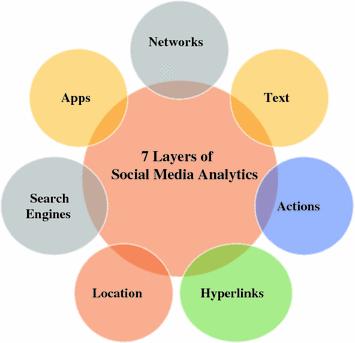What is Social Media Analytics?
72% of Americans use at least one form of social media. Everyone knows what Facebook is, and why people use social media–there's no need to explain that. But, why has the idea of analyzing social media interactions and gathering its data become so popular?
Here's the short answer: Analyzing social media data (social media analytics) enables informed decision-making.
...That's great. But what do you mean, and how?
*There's so much to be written about this topic, but you can use this article as a beginners guide.*

What is Social Media Analytics?
To scratch the surface, social media creates tons and tons of data that can be analyzed. Most of it is ultimately useless, but if you analyze the right pieces, it can be invaluable. Social media analytics is the art and science of extracting data and insight from semi-structured and unstructured social media data to enable informed decision-making.
Why do we use Social Media Analytics?
According to Creating Value with Social Media Analytics by Gohar F. Khan, social media analytics helps achieve business objectives through describing data and analyzing trends, predicting future problems and opportunities, and optimizing business processes.
Businesses use social media for a variety of reasons, and can analyze their data with social media analytics. Businesses can analyze several things on social channels for instance: What are customers on social media saying about our brand? Which content is resonating more with our clients? and which social platforms are driving the most traffic to our website? These questions can be solved by digging into the data of their social channels.
The Eight Layers of Social Media Analytics
Before we get into what programs are used to analyze data and how to measure data, let's look at where we can find the data. Each layer has valuable information and can be used for business and most can be used to develop KPI's (key performance indicators).

1. Networks - The first layer observes the networks are being used. Network analytics identifies influential people and organizations and their position in each network.
2. Text - This layer includes text items like comments, tweets, blog posts, Facebook updates, etc. Text analytics can be used to understand the sentiments of users.
3. Actions - Actions performed by users including likes, dislikes, shares, upvotes, mentions, comments, and endorsements. Actions analytics are used to measure popularity, influence, and prediction.
4. Search Engines - Layer four analyzes trends, keywords, search results, advertising spending, and history.
5. Location - Location analysis mines and maps the locations of social users, content, and data.
6.Hyperlinks - This kind of analytics is about interpreting incoming or outgoing web traffic. This can help figure out how much traffics is moving, and where.
7.Mobile - Mobile analytics deals with measuring and optimizing mobile content. With the rise of apps, more focus is going into this layer. This analyzes in-app purchases, customer engagement, and demographics.
8. Multimedia - This encompasses all media–video, images, audio, gifs, etc.
Wrap up
Social media analytics is a rapidly-changing and growing field. The data pouring out of social channels is being mined, analyzed, and re-purposed for the benefit of business. I hope that I've given you a brief overview on what social media analytics is, and how it's used. I'll be diving deeper into this topic in my upcoming blog posts, so stay tuned!
